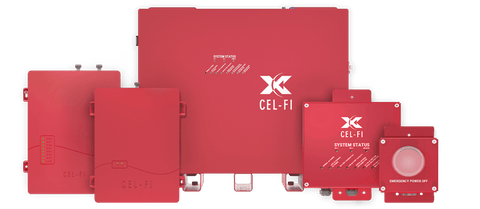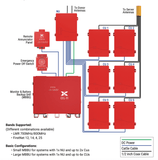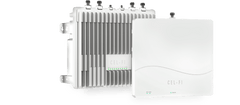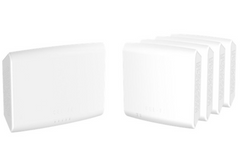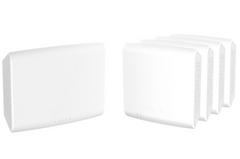Cel-Fi QUATRA RED Public Safety FirstNet ERRC Solution
Cel-Fi QUATRA RED Public Safety FirstNet ERRC Solution
Buy Now, Pay Later with No Interest if paid in full within 6-12 months. Choose Klarna payment option at the checkout for details of this, and other long-term low-interest financing options.
Free Lifetime Support. SKU / Model: 31-F42-10N-78F
To complete installation, this signal amplifier requires minimum one in-building server antenna and an exterior building donor antenna.
Expand coverage indoors by purchasing 50 ohm in-building server antenna kits that include required cables and splitter to connect to this 50 ohm public safety bands signal amplifier kit.
1(855)846-2654
Need installation quote, or help with designing a custom solution? Submit a request for quote.
- Description
- Reviews
- Questions & Answers
- Data Sheet / User Guide
- Make An Offer
- Warning
Description
Product Description
Cel-Fi QUATRA RED Public Safety FirstNet Active DAS Hybrid Cellular Solution is designed to provide consistent coverage in the most challenging building structures and to guarantee full compliance with the most current fire codes.
Built for integrators, AHJ's, and building owners to get a faster Certificate of Occupancy. Solving communication problems during a time of crisis. Saving Lives.
This is a Class A 700 / 800 MHz LMR solution with 56 channels and dedicated FirstNet LTE, that changes in-building public safety industry.
The latest public safety advancements in this all-in-one solution that has had integrators, building owners, and AHJs anticipating faster install times, better coverage, future proofing, and a quicker path to building occupancy.
Highlights:
- Class A with 56 Channels.
- Class B with 28 Channels (100 kHz & 150 kHz).
- 700/800 MHz for Public Safety with dedicated FirstNet.
- Automatic Isolation.
- Automatic Uplink / Downlink Calculation.
- Talk-out Guarantee.
- Scalable All-Digital PoE.
- Built-in Remote Monitoring.
Key Features:
- Performance Leadership.
- Ease of Install.
- Leaders in Value.
- Fastest Project Timeline.
- Code Compliant.
The Cel-Fi QUATRA RED Class A or Class B 700MHz/800MHz channelized Emergency Responder Radio Communications System (ERRCS) Smart Signal Booster was designed with the needs of First Responders, Building Owners, Installers, and Authorities Having Jurisdiction (AHJs) considered. The QUATRA RED is a complete solution, each component fully-compliant with the current International Fire Code (IFC) and National Fire Protection Association (NFPA) standards.
As the public safety community evolves to include cellular LTE support, the QUATRA RED is the only solution that offers true carrier-grade channelized support for FirstNet. Both LMR and LTE aggregated at the head-end, digitally-distributed over Category cable, and retransmitted through a single serving antenna or DAS field.
QUATRA RED is the first and only solution in the market that can easily be scaled from a single donor "BDA" deployment at 1 or 2 watts to a full-blown (single donor) "Fiber DAS" up to 12 watts.
QUATRA RED is best-in-class with 56 individually configurable channels on the Class A unit and 28 channels with 100Khz and 150kHz bandwidth options on the Class B variant (700MHz and 800MHz) and 1W downlink per Coverage Unit (CU) per band. Best-in-class channelized uplink squelch and micro-processor controlled automatic gain control (AGC) per time-slot, inherited from Nextivity’s carrier-grade LTE technology platform, unconditionally guarantees no interference to base stations and optimizes signal quality.
QUATRA RED includes all standard alarms, supports all NFPA and IFC-required monitoring, and connects to Nextivity’s carrier-grade, SOC 2 (Type 1)-certified WAVE portal, providing best-in-class on-demand remote monitoring, not just for standard alarms but also to ensure system KPIs.
Where competing products require integrators to purchase pieces and parts from a variety of vendors to create a complete solution, the QUATRA RED solution offers everything from the head end (Network Unit or NU), remotes (Coverage Unit or CU), Battery Back-up and Monitoring (MBBU), Remote Annunciator, Emergency Power-off Switch (EPO), and an As-Built Box. All NEMA 4X rated and optimized together.
Full list of features:
- Concurrent FirstNet Cellular and Public Safety Radio In-Building Coverage.
- 3G / 4G / LTE / P25 / Analog.
- Cat 5 (Ethernet) RF lossless distribution
- Support for all FirstNet LTE bands (2, 4, 14, 12).
- 100dB gain.
- 21-23dBm UL power (depending on band).
- 24dBm DL power per CU.
- Antenna pointing algorithm to optimize FirstNet donor signals.
- Support for 700 MHz and 800 MHz.
- 100dB gain.
- 26dBm UL power
30dBm DL power (1W per band). - Class A device with up to 56 channels, 12.5kHz filter bandwidth.
- Class B device with up to 28 channels, 100kHz, 150kHz configurable via WAVE portal.
- System delay – approx. 35us @ 12.5 kHz, 15us @ 100 kHz, 13.6us @ 150 kHz.
- Automatic UL and DL gain setting for Public Safety Channels ensure no interference of critical First Responder communications.
- Industry best Talk-In and Talk-Out performance due to real-time, slot-to-slot gain control.
- Total Power consumption (1x NU + 6x CUs) – 450W Max at 48V.
- NEMA 4X Rated, UL 2524 compliant.
- Remote Management through WAVE Portal.
Cel-Fi COMPASS RED.
The Cel-Fi COMPASS RED attachment to the Cel-Fi COMPASS enables installers and integrators to perform Site Surveys that will generate Public Safety Reports (which are required by some states). Some setup is needed in the WAVE Portal before the WAVE PRO app can install the Configuration Packages and Calibrate a QUATRA RED system. The app connects directly to the QUATRA RED MBBU via Bluetooth and can also be used to monitor the Radio Data and view the System Status and Alarms.
Cel-Fi WAVE Portal.
The Cel-Fi WAVE Portal is a cloud-based remote management platform that enables device management and maintenance of Cel-Fi QUATRA RED systems. The Cel-Fi WAVE platform is designed to also work on mobile phones which facilitates ease of use on site.
Cel-Fi QUATRA RED Public Safety FirstNet Active DAS Hybrid Cellular Solution Layout:

The number of Cel-Fi QUATRA RED FirstNet Boosters and coordinating antennas are selected based on the size of building, building materials, and wall configurations. This kit can be used with Outdoor Cel-Fi Wideband Unidirectional Panel Antenna or Yagi Antenna, LPDA Antenna, and Indoor Omnidirectional Dome Antenna.
QUATRA RED Components:
This kit contains installer components that can include:
- QUATRA RED Network Unit (NU) Part Model 31-F42-10N-78F.
- QUATRA RED Coverage Unit (CU) Part Model 31-F42-10C-78F.
- QUATRA RED Remote Annunciator Part Model 31-F42-10R-100.
- QUATRA RED EPO (Emergency Power Off) Switch Part Model 31-NF42-10E-100.
- QUATRA RED Small Battery Backup + Monitor (EXCLUDES BATTERIES), supports up to 2 CUs Part Model 31-F42-10S-100.
- QUATRA RED Large Battery Backup + Monitor (EXCLUDES BATTERIES), supports up to 6 CUs Part Model 31-F42-10L-100.
- QUATRA RED Extra Large Battery Backup + Monitor (EXCLUDES BATTERIES), supports up to 14 CUs Part Model 31-F42-10X-100.
QUATRA RED Network Unit.

The Network Unit (NU) model number Cel-Fi QUATRA RED F42-67ENU processes FirstNet and LMR off-air signals digitally to provide reliable and interference-free coverage. PoE based architecture and Cel-Fi patented algorithms for automatic setting of uplink and downlink gain, reduces time and cost of installation significantly, making Cel-Fi QUATRA RED the most compelling public safety solution in the market. Supports 700/800 LMR + FirstNet bands 14, 4, 25 and 12. Connects to up to six CUs can be attached to a single NU. Dedicated donor ports for LMR and LTE.
QUATRA RED Coverage Unit.

The Coverage Unit (CU) model number Cel-Fi QUATRA RED F41-8XCU amplifies FirstNet and LMR signals up to 24 dBm and 30 dBm output power. The ease of installation plus the Self Organizing Edge Intelligence makes Cel-Fi's QUATRA RED the most compelling solution in the market. 1 watt output power for each LMR band. Class A device with 56 channels for both 700 & 800 bands. PoE ready. N type port to distribute RF signals.
QUATRA RED Remote Annunciator Panel.

The Cel-Fi QUATRA RED Remote Annunciator Panel model number Cel-Fi QUATRA RED F42-10R-100 provides automatic supervisory signals for malfunctions of the ERRCS solution. Rated NEMA 4, it complies with Chapter 10 of NFPA 72 and section 9.6.13 of NFPA 1221. The PoE architecture allows for a quick installation and alarm configuration. The unit includes a FORM-C cable compatible with any fire alarm control panel (open or short circuits). Reports all alarms required by code. Normally open or close wiring options. Connects with MBBU via category cable.
QUATRA RED Emergency Power-off Switch.

Cel-Fi’s QUATRA RED Emergency Power Off Switch (EPO) model number Cel-Fi QUATRA RED F42-10E-100 can instantaneously shut down the ERRCS solution from a single point to eliminate the risk of combustion caused by electricity or static. Designed to prevent inadvertent operation and can be installed in any location designated by the authority having jurisdiction. Shuts- off the radio system in case of risk of explosion or interference with the network.
QUATRA RED Monitor & Battery Backup Unit.

The Monitor and Battery Backup Unit (MBBU) are available in 3 models: Cel-Fi QUATRA RED Small: F42-10S-100; Large: F42-10L-100; Extra Large F42-10X-100. This is the central point of the Cel-Fi QUATRA RED system. It provides constant direct current, alarming, monitoring and battery charging capabilities. Integrates a wireless LTE modem and a wired Ethernet port for remote access to all the components via the Cel-Fi WAVE Portal or the WAVE PRO app. Is NEMA 4 rated and UL2524 compliant. Two versions available to optimize power requirements and installation costs. Supports 12hrs or 24hrs battery back up configurations. Front panel alarm, with LTE modem built-in. Three sizes for small, large, and extra large configurations.
Cel-Fi QUATRA RED Set-Up Diagram Example with 6 Coverage Units:
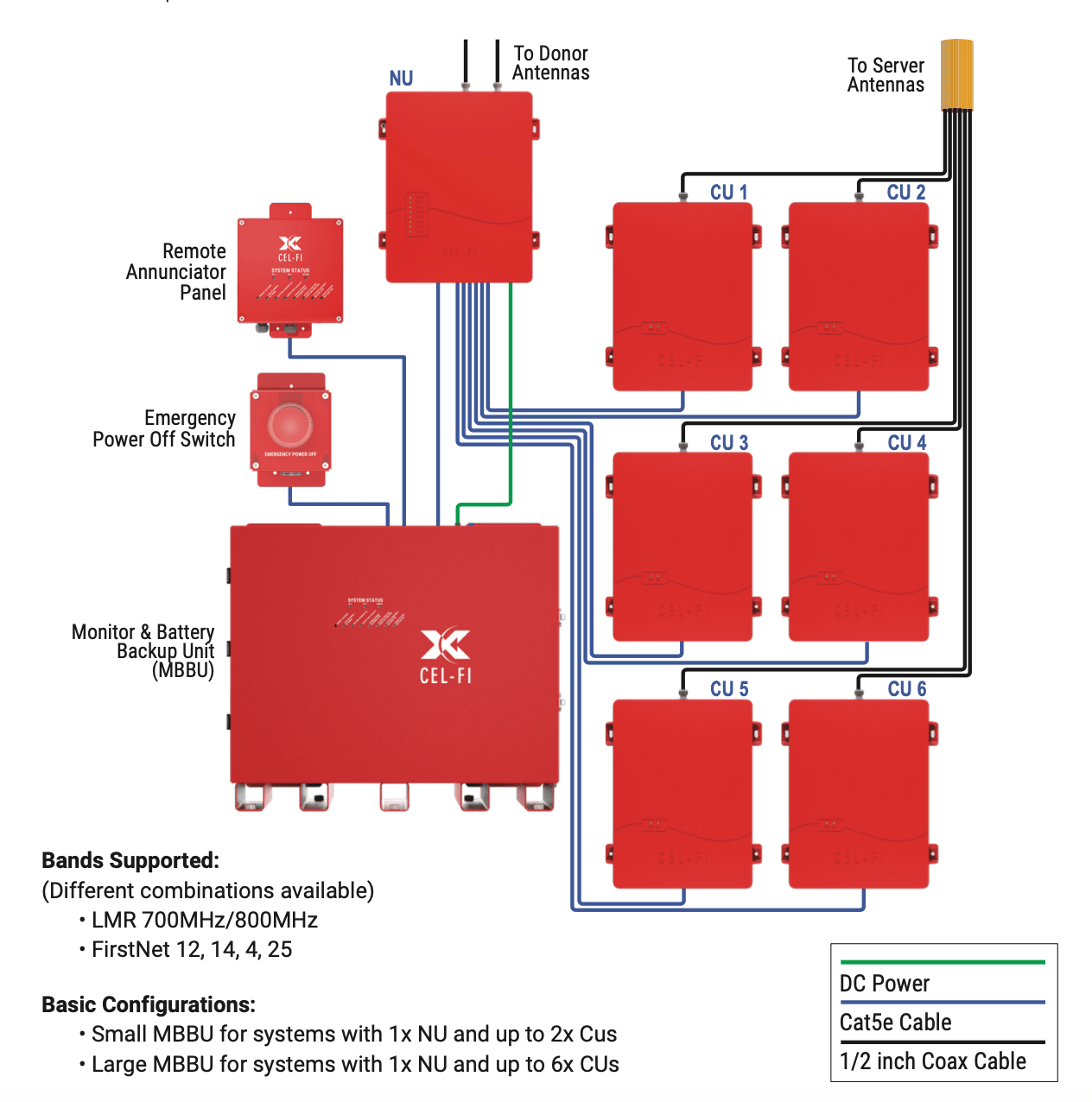
Product Specifications & Installation.
| Network Unit: | Cel-Fi QUATRA RED Network Unit Specifications. |
|---|---|
| Coverage Unit: | Cel-Fi QUATRA RED Coverage Unit Specifications. |
| Remote Annunciator Panel: | Cel-Fi QUATRA RED Remote Annunciator Panel Specifications. |
| Emergency Power-off Switch: | Cel-Fi QUATRA RED Emergency Power-off Switch Specifications. |
| Monitor & Battery Backup Unit: | Cel-Fi QUATRA RED Monitor & Battery Backup Unit Specifications. |
| Installation Questionnaire: | Professional installation by SignalBooster.com certified installers. Mounting hardware included. |
Cel-Fi QUATRA RED Video Illustration:
FirstNet Public Safety Cellular Network.
In the world of public safety, communication is a matter of life and death. When at an emergency site, it is critical that public safety personnel can communicate to each other with the command side providing direction. This is a mission critical area, where good enough is not good enough. Federal and local codes require public safety communication systems along with sprinklers and fire alarms. In addition, in 2018, all 50 states and U.S. territories passed the FirstNet Public Safety Cellular Network in addition to the current local public safety network to give public safety personnel priority and to advance communication capability with voice and data capability.
Cel-Fi QUATRA RED ERRCS public safety solution.
ERRCS stands for Emergency Responder Radio Coverage Solution. Introducing the Cel-Fi QUATRA RED ERRCS public safety solution. These all-in-one class A and B solutions are available for public safety BDA configurations, public safety DAS configurations, and, of course, solutions that require both public safety DAS and cellular coverage.
Cel-Fi QUATRA RED Network Unit, NU.
Let us review the components, starting with the Cel-Fi QUATRA RED Network Unit or the NU. It delivers in building coverage to land mobile radio systems and FirstNet ready devices. Each NU can be attached to up to six coverage units via ethernet. There's a dedicated port for both the LMR and LTE donor antennas.
Cel-Fi QUATRA RED Coverage Unit, CU.
Next is the Cel-Fi Quatra Red coverage unit or the CU, which delivers one watt of output power for each LMR. Each NU can then distribute the signal to remote units. Quatra Red can be shared between 700 or 800 megahertz and is UL 2524 compliant. Variants include Class A devices with 56 channels and Class B devices with 28 channels.
Cel-Fi monitoring and battery backup unit.
Next is the Cel-Fi monitoring and battery backup unit. It provides constant direct current, alarming, monitoring and battery charging capabilities. The MBBU integrates a wireless LTE modem and a wired ethernet board for remote access to all the components via the Cel-Fi wave portal or the wave pro app. Three versions are available to optimize power requirements and installation costs.
Cel-Fi emergency power off.
Next is the Cel-Fi Emergency Power Off. This switch can instantaneously shut down the system by the AHJ from a single point.
Cel-Fi Remote Annunciator.
Last is the Cel-Fi Remote Annunciator. It provides automatic supervisory signals for malfunctions of the ERRCS solution. The POE architecture allows for a quick installation and alarm configuration. The unit includes a form-c cable, compatible with any fire alarm control panel.
Cel-Fi QUATRA RED is based on the same award-winning advancements and technology that transformed the in-building wireless industry with the Intelliboost chipset at the core and the Cel-Fi wave remote management platform. Key features include performance leadership, ease of install, leaders in value, fastest project timeline, and code compliant. Cel-Fi QUATRA RED can ensure that your design process is easier, and building owners have a faster path to building occupancy. Nextivity has once again innovated in building wireless, making buildings safer.
WARNING. Per FCC laws and regulations, this INDUSTRIAL GRADE device must not be installed by consumers. It is designed for installation by QUALIFIED INSTALLERS only. You MUST have an express consent in writing from all Carriers in your service area to operate this device. Unauthorized use may result in significant forfeiture penalties, including penalties in excess of $100,000 for each continuing violation. Please contact us for a quote if you require professional installation and assistance with consent and approval process.
Reliable communication during emergencies is vitally important for the safety of first responders; it can mean the difference between life or death.
The Evolution of In-Building Public Safety Communications.
Fortunately, public safety communications platforms have evolved considerably over time, as has the legislation that supports them. First responders have been relying on two-way radio communications since the 1930s to deliver situation awareness and facilitate communications, both of which are critical components of maintaining safe and secure operations on the ground. Over the years, manufacturers like Motorola and others have done amazing work in developing and iterating LMR (land mobile ratio) technology; they have succeeded in creating new and innovative functions and features that contribute to the safe operation and overall effectiveness of communication systems.
With the evolution of LMR systems, many different technologies have been developed and implemented in both new and improved systems across the country. This has resulted in the Public Safety community struggling with interoperability, making it almost impossible to enable emergency communications across agency and jurisdictional lines. In some buildings, especially those situated on jurisdictional boundaries (like county lines), local first responders utilize a variety of radio services and frequencies, which simply adds to system cost and complexity.
The coverage problem is compounded when in-building communications utilizing LMR have the same negative issues as cellular. An example is that network towers for LMR are located outdoors, which means signal penetration through building materials like concrete and difficult RF environments can be challenging to say the least. LEED (low-emission certified) buildings are especially challenging because coatings with high attenuation properties are used to create energy efficient buildings. These coatings, in addition to other obstacles in the construction of the building, and the environment, are preventing first responders from being able to make vital communication connections over LMR.
Following the horror of 9/11 it became painfully obvious to legislators that a breakdown in communications was responsible for unnecessary and tragic loss of life, with communications between incident command and first responders in the World Trade Centre either unheard or lost. This tragedy led to the 2012 creation of the First Net Authority, an independent body responsible for developing, deploying, and operating a new NPSBN (National Public Safety Broadband Network) to be based and operated on 4G LTE cellular technology. The new NPSBN would be established to deliver a highly reliable, independent, interoperable communication platform specifically for incident response, highlighting mission-critical abilities like pre-emptive action and network priority.
The successful bid to deliver the network to FirstNet was won by AT-T, and the network was ultimately switched on in 2018. Today in 2020, the implementation of FirstNet is rapidly moving forward. Every state and territory, and that includes Washington DC, have approved the plan as detailed by FirstNet explaining how the network will be implemented within their own jurisdiction. Currently, in excess of 1.2 million subscribers have signed on with more than 7000 agencies, covering over 2.6 million acres. It’s estimated that FirstNet will ultimately cover around 75% of the United States, or around 2.74 million square miles.
Public safety agencies and first responders nationwide have access to both FirstNet (LTE) and LMR capabilities, but there will be times where departments use both, or one or the other. Because there are capabilities provided by 4G LTE technology that are not available through LMR, it’s predicted that Public Safety will eventually migrate to that platform, particularly where we have agencies continuing to implement new wireless broadband applications and services. However, for the time being both platforms are necessary and useful, and continue to evolve simultaneously.
The Challenging Issue of Dead Zones
Loss of signal or interruptions in communication are perhaps the most critical issues at the centre of any emergency situation. Both these problems can be caused by infrastructure and geographical issues. In the above example, a radio signal from the exterior of LEED-certified structures can be reduced by up to 30 dB, basically creating a dead zone.
A report issued by the NIST (National Institute of Standards and Technology) after a large sampling of first responders had been interviewed regarding issues with Public Safety Communications, revealed that the top three issues were reliability, usability, and interoperability - resulting in an urgent request for state-of-the-art technology.
A large percentage of respondents stated that dead zones were one of the biggest issues they had to deal with in emergency situations. The report stated that first responders have to face issues like structural interference (like basements, high-rises, subways, and tunnels) geographical interference (like canyons, valleys), and dead zones.
In order to resolve the issues, responders requested that repeaters be used in buildings. The 2019 report offers a timely viewpoint on the transition by the Public Safety community from today’s LMR to a future LTE network. It’s obvious that first responders need technology that works effectively when they need it, and to work how they expect it to work.
Public Safety Communication Systems and Their Main Technology Elements
In 2009, the Emergency Responder Radio Communications System (ERRCS) for radio coverage within buildings was introduced as part of the International Fire Code – section 510. Jurisdictions use this code to standardize equipment and processes used by first responders. This code is also referenced by jurisdictions in their laws, and compliance is required.
One of the issues we see with the United States’ Public Safety ERRC market is that every jurisdiction is authorized to interpret and impose public safety codes the way they see fit. The result is that there’s a significant variation in codes between locations; not only with frequencies, but also the way in which certain standards are being enforced. Because of this anomaly, many in-building Public Safety systems are a combination of components that have been put together on a case-by-case basis to meet cost, performance, and time-to-market expectations.
When choosing technologies to conform with in-building codes, we must consider several key areas as we move forward:
Radios – Each jurisdiction has adopted its own communications plan which involves FirstNet, LMR bands, or a combination of both. These are pre-defined frequencies that are typically licensed by the FCC. However, options are limited because not all vendors or solutions support all radio types. Many vendors do not support VHF and UHF frequencies.
Booster Class – The classification of Class A or Class B is in an important distinction. Because Class A devices have narrow filters to limit the extent of noise bleeding into other systems and channels, these devices typically perform better. The wider filters with Class B equipment means that transmission can occur in unwanted or unintended channels, thus creating potential interference with other systems and unnecessary noise. Class A equipment was not mandated by jurisdictions because it was typically more expensive; however, the difference in costs today between Class A and Class B is not as wide.
Pathway Survivability – Pathway survivability refers to the requirements for system components, conduits and risers, and the duration of same to survive a fire. There are the normal specifications that relate to fire-rated enclosures, circuit integrity, and cable integrity, including an alternative AHJ approved method to both interpret and enforce local codes.
Requirements for Pathway Survivability have a massive impact on costs in any given jurisdiction; for example, the difference in cost between fire-rated and non-fire-rated gear comes in at a factor of 10 or more. Fire rated coaxial cable that’s 3M wrapped can cost the owner of a building up to or even more than $300 per linear foot. However, a number of research and development efforts are currently underway in an attempt to produce more efficient fire-safe cables.
Battery Backup — Let us discuss the really important difference between commercial-grade systems and public-safety grade systems. When there’s a fire incident, the fire department’s first objective is to cut power to that building. This means that a system that’s being relied upon to work during a fire incident must have battery backup. Some AHJ’s and jurisdictions may insist on 24-hour battery backup, but the most common systems include 24-hour backup. On the other hand, we must eliminate commercial systems as potential Public Safety systems because no backup is required or offered. This requirement is overlooked by many vendors, and property technology managers and system integrators are often led down the wrong path with their commercial equipment.
It’s even possible that a jurisdiction might allow for generator-based backup, although this is not very common. So keeping this in mind, we suggest you carefully check the requirements, or alternatively, work with someone who has firsthand knowledge of both local codes and the interpretation of local codes.
NEMA Rating – In order to ensure that all building systems are protected from the effects from sprinkler systems and water from hoses, it’s a requirement that all public safety equipment be NEMA rated. There will, of course, be variations between jurisdictions in the specific NEMA requirements. While some call out 3x or 4x, some version of NEMA 4 is required in most jurisdictions. Some equipment may not come with an NEMA rating, even though it’s marked as Public Safety. It’s then left to the installers to invest in off-the-shelf housings that are NEMA-rated, thus adding to the system’s complexity, cost, and size.
Monitoring – It’s a requirement that proper ERRCS systems provide standard alarms under certain set conditions. The alarms are part of the on-site Fire Alarm Control Unit and, when tripped, the alarm initiates action from local first responders.
Maintenance – A physical annual check-up is typically required under the ERRCS system maintenance provisions which are enforced by most jurisdictions. Today’s modern ERRCS systems often include remote monitoring that’s over-and-above the basic alarm system required by code. Unfortunately, monitoring is often overlooked and typically under-serviced. An installed system can unknowingly be compromised over time by just an unplugged component or simple cut cable. If a system is not monitored properly when not in use, it could well fail when needed during an emergency. System monitoring is now becoming a requirement by some jurisdictions, enabled by reporting, alerts, and alarms. It’s expected that this will become a standard requirement in the very near future.
Cel-Fi QUATRA RED — Nextivity’s Innovative All-In-One ERRCS System.
Public Safety products that incorporate key technology elements and are code-compliant have now been introduced by Nextivity. The latest addition to their product line-up is the Cel-Fi QUATRA RED. The QUATRA RED is the first dedicated concurrent Public Safety LMR Radio and FirstNet Cellular In-Building Class A ERRCS system available on today’s market. The QUATRA RED not only works with FirstNet’s 4G LTE bands, it also supports P25/LMR channels in the 700 and 800 MHz spectrum.
Nextivity’s modular Cel-Fi QUATRO RED comes complete with all the ERRCS components as listed above; it’s also ETL listed for UL2524-compliance. The QUATRA RED comprises the following:
- Network Unit (NU): Also known as the Head End, the Network Unit is where FirstNet and LMR donor signals are absorbed then converted to digital, ready for distribution.
- Coverage Unit (CU): More commonly known as a Remote Unit, the Coverage Unit (CU) is where the digital signal converts back to analog RF, gets boosted, then retransmits via an antenna to deliver coverage.
- Master Battery Buck-Up Unit (MBBU):Not only is the MBBU an adaptable battery backup system, it houses the entire system’s communications capabilities. It also enables Internet connectivity to Nextivity’s WAVE portal, which is where the monitoring of all Cel-Fi systems takes place. The MBBU produces dry contacts for the FACU.
- Remote Annunciator: Some AHJ’s and jurisdictions prefer that the ERRCS Annunciator be physically located next to the FACU. With dry contacts for alarming, the Cel-Fi QUATRA RED can be powered and connected remotely to the MBBU via Ethernet cable.
- Emergency Power Off (EPO): With its own EPO switch, POE (power over ethernet) the Cel-Fi QUATRA RED can be placed in the fire room together with the main system, or remotely placed then connected via Category cable.
- Active Server Antenna: The Active Server Antenna of the Cel-Fi QUATRA RED allows each separate antenna in the system to be monitored and alarmed.
Easy Deployment:
Depending on on-site needs, a single Cel-Fi QUATRA RED system can be set up like a fibre DAS or a simple 1W BDA – up to 6W for every NU. The RF donor signal from the high site is taken in by the NU (head end), where it’s digitalised then distributed to each remote unit over Ethernet (Category) cable.
1W per band is supplied by each CU, with the combined LMR and FirstNet signals being delivered with a single RF output. An attached omnidirectional antenna can be used to provide coverage, or a DAS field can be attached to the Coverage Unit. A short jumper cable can be used to position the CU next to the NU to support a deployment similar to a BDA. Alternatively, like a fibre DAS, the Cover Unit can be positioned up to 150m away from the Network Unit. 6 Cover Units in a star configuration can be supported by a single Network Unit, with one single donor delivering the flexibility of up to a 6 W system.
With ethernet powering each remote unit, the battery backup aggregates at one point at the Head End, dramatically reducing both the complexity of installation and system costs. This means that, should any individual Coverage Unit cable be cut, the remainder of the system will remain unaffected.
When compared to a cable-based system, the complexity is significantly reduced if Category cable is used to distribute signal throughout the building. The methodology of using Cel-Fi Category cable ensures that each CU, the point where the signal is retransmitted, is running at full power. The result is that installers have an easier planning process, and there is a reduction in the costs and time to market, including CO (certificate of occupancy).
FirstNet Bands:
There are people in the industry who believe that FirstNet is limited to the 700 MHz Band 14, but FirstNet is actually delivered by AT-T across all of its bands. Depending on the band being broadcast by AT-T at the specific site, Cel-Fi QUATRA RED transmits not only to band 14, but also to bands 25, 12, and 4. This means that FirstNet coverage is much more reliable, and FirstNet can even be provided where band 14 is unavailable.
Superior Automatic Gain Control:
Many ERRCS systems have a problem with gain. The QUATRA RED has stringent requirements for gain control, and has come from a technology platform that’s been globally tested for gain control over LTE networks. The result is that the QUATRA RED delivers improvements never offered before in the Public Safety market.
It can be difficult to get gain settings exactly right in BDA’s and BDA-fed fibre-DAS systems. Too much gain could drown out other neighbouring systems or the high site by swamping the network, whereas too little gain could mean dead zones with little or no coverage or pockets within the system where voice quality suffers. That’s why highly skilled engineers are required to set gain in traditional ERRCS systems, using trial and error.
The Cel-Fi QUATRA RED has intelligence built into its system, and the system’s components have the ability to not only sense each other, but understand their state of operation. This means that, in order to eliminate the problems mentioned above and simplify the process, the installer can set gain at just the touch of a button.
Systems can also be connected to the WAVE cloud and monitored accordingly. Therefore, should there be any issues post-installation, alarms will be activated in the cloud to instigate a response.
Donor Antenna Intelligence:
Both LMR and FirstNet are supported by the Cel-Fi QUATRA RED, with an RF donor-port for each in the event that the location of donor signals are different. This means that each donor antenna can be independently optimized and pointed. Directional antennas have the challenge of being pointed in the right direction and, to make the problem worse, it’s not always a strongest signal or the closest tower that should be used. Signals from different towers can vary widely, affected by loading, technology version, frequencies, power, location and many other factors.
Nextivity resolves this by using an application known as Antenna Pointing, which is available in the CelFi WAVE PRO app. It’s so easy to use: the installer simply aims the antenna then clicks on the ‘test’ button. Once the installer has received the signal quality report results, testing can be carried out again by rotating the antenna another 45°. Once ideal result have been obtained, the installer fixes the antenna to that direction.
This is an entirely different approach to other systems available on today’s market today, where it’s only signal strength that’s tested. In our opinion, strength is not a sufficient metric, because the signal quality or type and the amount of noise is not measured. In addition, the best signal is quite often not the strongest signal.
Extensive Filters:
It’s important that Public Safety radios are set up with specific channels and frequency configurations based on the implementation and licensing within the radio-covered area. Configurations can become extensive and quite complicated, especially in areas where jurisdictions border each other and within large metro areas, where resources from both areas can be used and accommodated. Complexity can create issues at any given site if a repeater is unable to support sufficient combinations or frequencies to comply with local requirements. In situations like this, it may be necessary to use multiple BDA’s or wider filters. The Cel-Fi QUATRA RED supports 56 filters, the most filters in the industry, and what’s more, each filter can be programmed individually. With a system that’s been correctly set up, this configuration can be saved, then immediately loaded again into new systems being implemented in the area.
The Cel-Fi Difference:
For more than 10 years now, cellular coverage systems have been delivered globally by Nextivity. Because a commercial system is required to support such a huge number of users, a commercial cellular system’s requirements for switching and gain control are more onerous than a public safety system’s requirements. Nextivity stepped up and developed a top-of-the-range automatic slot-to-slot gain control system, guaranteeing superior performance for talk-in talk-out. This exclusive technology by Nextivity has been integrated into their Cel-Fi QUATRA RED, delivering optimal DAQ (Delivered Auto Quality) results.
Designed to resolve one of the greatest challenges in today’s Public Safety ERRCs market, the modular Cel-Fi QUATRA RED was built from the ground up to ensure that each and every jurisdiction has the ability to not only interpret safety codes, but also enforce them. A significant amount of frequency variation is required for different locations, including how to implement specific standards. The implementation of all safety codes in a configurable way is supported by the modularity of the Cel-Fi QUATRA RED.
A Flexible Approach to Public Safety Communication.
With the Public Safety community moving rapidly towards 4G LTE infrastructure, Nextivity will continue meeting the need for flexible communications solutions that not only facilitate uninterrupted communications, but also meet diverse jurisdictional requirements and industry standards. This technology by Nextivity in introducing the QUATRA RED bridges the many diverse challenges faced by public safety communications systems. QUATRA RED was built on Nextivity’s globally-deployed proven and market leading technology, and was designed to ensure the safety of emergency workers and the people they’re trying to protect by serving both FirstNet and LMR environments. Providing a one-stop, flexible approach to resolving the progressively changing issues of existing environments, the QUATRA RED meets the ever-involving requirements around NEMA 4 ratings and network performance. This integrated solution for in-building locations is easy to install and assists building owners and developers in resolving the communications issues that Public Safety professionals continue facing today, while Nextivity continues planning well into the future by keeping their systems updated and current.
The Standardization Picture:
NFPA 1221 is the standard that’s been almost universally implemented in the United States, and this standard identifies not only the use of emergency services communications systems, but also the appropriate design, installation and maintenance of same. International Fire Code (IFC) or NFP-compliant Public Safety ERRCS (Emergency Responder Coverage) are now required by many jurisdictions as a prerequisite for obtaining an occupancy permit.
In 2009, Section 510 of the International Fire Code was a concept introduced for ERRCS for radio coverage within buildings, and jurisdictions now use this concept to standardize the processes and equipment used by first responders. There’s now a push to develop new cellular-based FirstNet standards, in addition to improving standards on existing technology.
Today, any building deemed safe for occupancy, rent, lease or sale must undergo inspection and be given a CO (Certificate of Occupancy). In order to obtain a CO, every location has its own requirements, rules, and regulations. While each jurisdiction has the freedom to interpret and improvise these requirements, the majority of CO requirements are founded on established standards like IFC 510 and NFPA 1221.
Reviews
Questions & Answers
QUESTIONS & ANSWERS
Ask a Question-
Looking for quote on ERRS booster system testing and preventative maintenance.
Please submit building location and contact information for ERRC testing service, so we can help you based on your needs.
Data Sheet / User Guide
Make An Offer
Warning
Note: For any signal booster to help, outside signal strength must be at least -110 dB or there must be a clear line of sight to a cell tower that is within twenty miles. Before ordering, please check outside signal level in decibels or ensure that you can make and hold a phone call at any good spot outside where you can mount an exterior antenna. Square footage stated in signal booster listings is based on good signal outside. If it is any weaker, the boosted sq. ft. area will be considerably lower, accordingly.
Kevin K. of Anderson, California gave the following review:
Website is easy to use with plain straight forward info but could have had more on testing signal strength to make sure you get a strong enough booster.
Therefore, please note that stated sq. ft. coverage is based on good signal outside. For best results: If outside signal is weak, we suggest choosing the next higher sq. ft. coverage kit. If outside signal is very weak, we suggest choosing the kit with even more higher sq. ft. range bracket. Basically, higher the sq. ft. bracket, the more powerful the signal amplifier with greater Gain as well as higher uplink and downlink output power.
If outside signal is too weak (weaker than -110 dB), submit request for cell coverage solution assessment. Upon receipt of questionnaire, we will perform residential or business site survey. This will help us determine the system that is needed to improve cell coverage. Then, we will create system design using that system such as femtocell, active or hybrid distributed antenna system (DAS), or other carrier feed signal enhancing method available that will work at your signal-challenged location. Finally, we will schedule for installation after equipment and installation service quote has been approved by you, or your company.
For non installation-included kits: Most home / office / building cell signal booster kits only include bracket to mount exterior antenna on outside wall, edge of roof, or existing pipe up to 2 inches in diameter. Mounting pole not included with most kits, unless stated specifically that it is included for free. Therefore, a mounting post must be purchased separately if you will require it to mount exterior antenna.

Related Products


